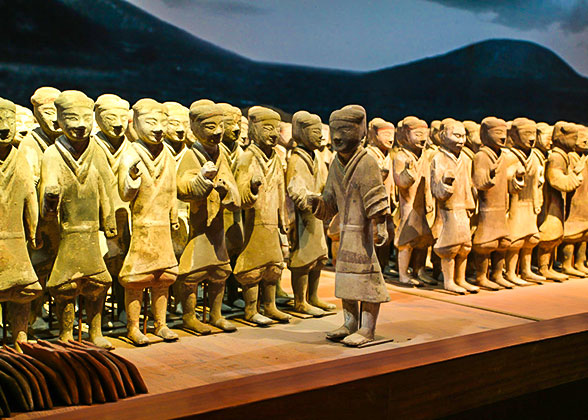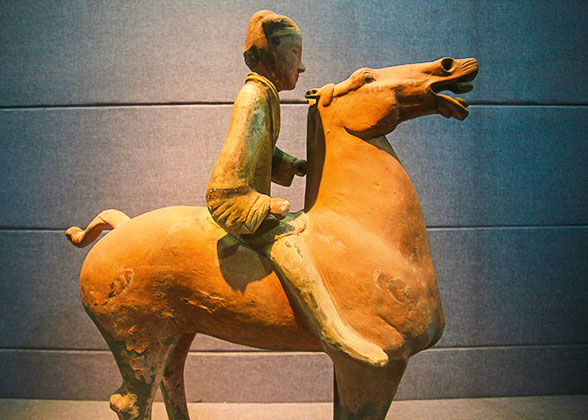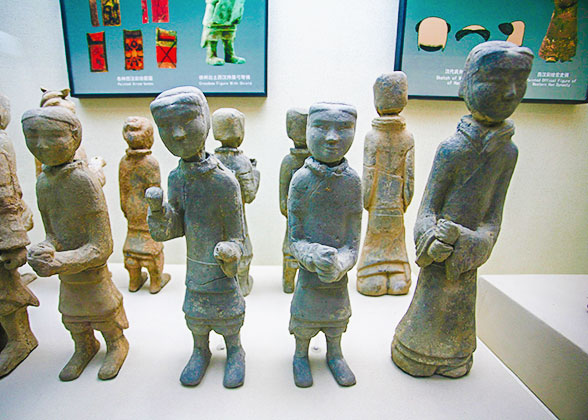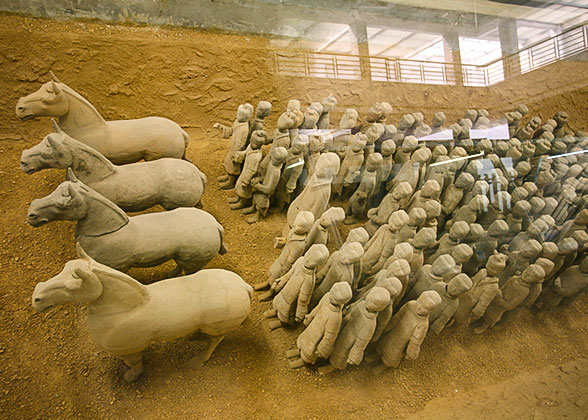4 Sites of Terracotta Warriors besides Xi’an Terracotta Army
Xi’an Terracotta Army was the grave goods for China’s first emperor Qin Shi Huang (259BC-210BC). Emperor Qin Shi Huang wanted a massive army for his afterlife, so did others. This article will introduce you another four sites of Terracotta Warriors in China. Though with smaller scale, these four sites have their unique historical and artistic values. It is worth mentioning that all of them were built during the Western Han (202BC-9AD), thus not the fake sites of Terracotta Army.
1. Han Yang Ling Terracotta Warriors in Xianyang City, Shaanxi Province
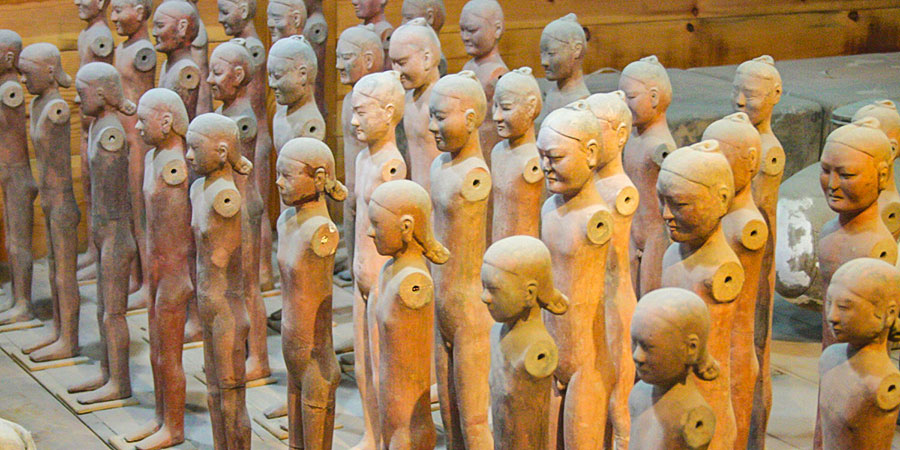 |
| Han Yang Ling Terracotta Warriors |
This site distinguishes itself from others because there are thousands of naked Terracotta Warriors. These figures used to wear silk and linen clothes and have wooden arms. However, having been buried for more than 2,000 years, all these accessories considerably decayed and that’s why the unearthed terracotta figures in Han Yang Ling Mausoleum are naked without arms.
So far, over 600 gracefully-proportioned Terracotta Warriors with an average height of 60cm (2ft) have been excavated. They wear helmets, robes, armors and hold weapons. Also, this site boasts very special Terracotta Eunuchs. Terracotta Eunuchs are shorter than Terracotta Warriors, and visitors can easily recognize them through their sex organs and bashful looks. They help us know more about the castration culture in the Han Dynasty (202BC-220AD). In addition, there are also many Wooden Warriors and female terracotta figures. In some pits, visitors can also find wooden horses, chariots and boxes used to store weapons.
Unlike the aloof expressions on Terracotta Warriors for Emperor Qin Shi Huang, figures in Han Yang Ling Mausoleum look very happy. Actually, craftsmen at that time made these statues on the basis of real soldiers, eunuchs and maidservants, whose expressions were vividly frozen by craftsmen. So, you can imagine how thriving that period was.
2. Yangjiawan Terracotta Warriors in Xianyang City, Shaanxi Province
|
|
Here, infantry figures were buried in five pits of different sizes, and each pit contains 100 to 300 figures in red, yellow and white. Moreover, visitor can see two sizes of Terracotta Infantries. The larger ones have 48.5cm (1.6ft) height while the smaller ones 44.5cm (1.5ft). Unlike infantry figures, the warrior figures look more powerful. They wear black armors, hold shields and swords, and some also carry arrows. Cavalry figures can be seen in six pits and the terracotta horses are very lifelike. With swelling nostrils and upright ears, they slightly lift up their heads, seeming like they are ready for the coming battle. Besides, this site also has some musician figures and commander figures.
The large scale and diversified items together make Yangjiawan Terracotta Warriors the sound evidence to research the troop formation during Western Han. As for the owner of this site, the most wide-spreading guess is a general called Zhou Bo in Western Han. However, it hasn’t been confirmed yet.
3. Shizishan Terracotta Warriors in Xuzhou City, Jiangsu Province
|
|
This site is made up of six tunnels and has more than 4,800 terracotta statues. These statues were all scaled down to one quarter or one fifth based on real people. The terracotta Infantry has various types. Some hold long weapons and some have plaits. Among the terracotta figures who drive chariots, some wear armors and others tightly hold the reins. In addition, many Terracotta Cavalry and Terracotta Horses were also unearthed in this site. Visitors will definitely be attracted by the marvelous craftsmanship of Chu State. That’s because all the figures displayed here are in different moods. Some look up and keep their mouth open, truly like the people who burst into tears. Some figures lean on these crying figures and seem to comfort them. There are also other depressed figures lowering their head and frowning.
Shizishan site also has an Underwater Terracotta Warriors Museum.
4. Weishan Terracotta Warriors in Jinan City, Shandong Province
Pit 1 has over 170 Terracotta Warriors, 50 Terracotta Horses, 4 Terracotta Chariots, hundreds of shields and other terracotta instruments like drums. All of these items were colorfully painted and they can let us know what the ancient nobility would take when he went on a journey. However, due to the collapsing of the covering board, many of these relics are severely damaged.
In Pit 2, there are many daily articles. Archaeologists have unearthed one chariot, two horses and seven Terracotta Warriors at the bottom. They also noticed the trace of rotten wooden box here.
Pit 3 has stone coffins and wooden coffins, which store a small amount of human bones. Other items include several pottery pots and basins, more than 30 arrowheads and some stone balls for unknown purposes.
Compared with Qin Terracotta Army, Weishan Terracotta Warriors are less majestic. However, the latter surpasses the former by the relics’ originality and variety. Such sharp contrast results from their different historical backgrounds. The stateliness of Qin Shi Huang is directly showed through the uniform and august terracotta statues. And Western Han is a more inclusive dynasty, so the unearthed relics in Weishan are more delicate and diversified.
You May Like
- Last updated on Aug. 14, 2024 by Catherine He -
